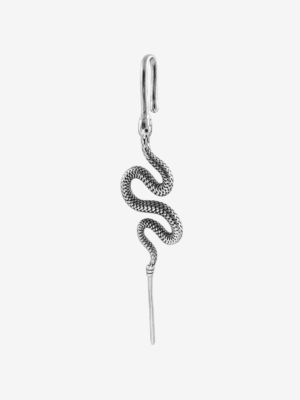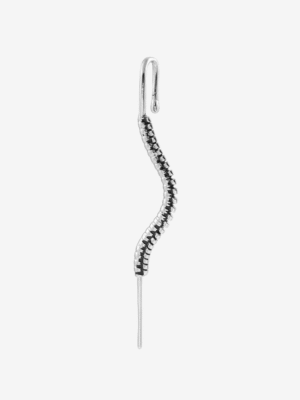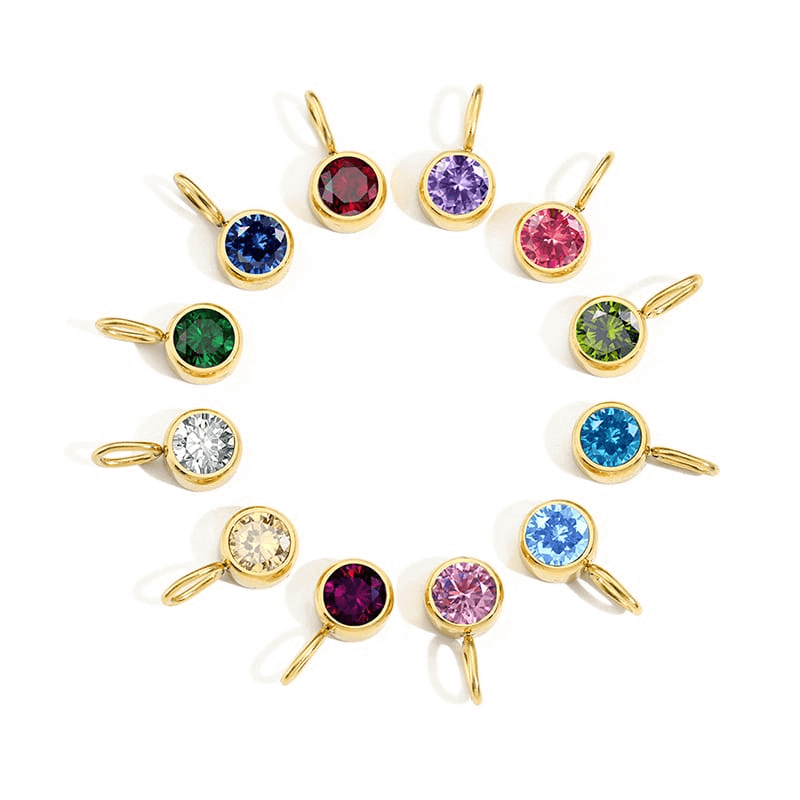Why Stainless Steel Jewelry is Perfect for Everyday Wear

Stainless Steel Jewelry | Top Image by Ron Lach via
More and more people are embracing sustainable jewelry options. Recent trends show that there were 28.4 million consumers seeking durable, high-performance jewelry last year — with 63% of them choosing hypoallergenic and tarnish-free pieces for the first time. This shift toward eco-friendly, long-lasting accessories is expected to grow significantly in the coming years.
Stainless steel jewelry has become a top choice for those seeking style and practicality in their everyday accessories. Its durability, hypoallergenic properties, and low maintenance make it ideal for daily wear, without compromising on elegance or performance.

What is Stainless Steel?
Stainless steel is an alloy of steel, typically composed of iron, carbon, chromium and other alloying elements such as nickel, molybdenum, manganese, silicon, and phosphorus, which is excellent for jewelry making. Chromium is the fundamental element that gives stainless steel its corrosion resistance, as when chromium content in the steel reaches around 12%, a very thin oxide layer forms on the surface of the steel. This layer provides strong corrosion resistance, making stainless steel an ideal choice for jewelry manufacturers.
What is Stainless Steel Made of?
316L Stainless Steel: Also known as surgical steel, it features 16% chromium, 10% nickel, and 2% molybdenum. Renowned for its excellent corrosion resistance and hypoallergenic properties, it is frequently used in high-quality jewelry.
316 Stainless Steel: Comprising 16-18% chromium and 10-12% nickel, this alloy is durable, resistant to corrosion and heat, and maintains a polished finish.
304 Stainless Steel: Known as 18/8 Stainless Steel, it contains approximately 18% chromium and 8% nickel. While it is less corrosion-resistant than 316L, it is still widely used in jewelry.
204 Stainless Steel: This alloy includes about 16-18% chromium, 1-2% nickel, and added manganese. It offers less corrosion resistance compared to 316L and 304L and is not fully hypoallergenic, though it may be better for those with mild nickel sensitivity.
Learn more: Hypoallergenic Metals: Which Earrings & Jewelry are Best for Sensitive Skin
“Quality is not an act, it is a habit.”
Aristotle
What are the advantages of stainless steel jewelry?
- Highly durable: Stainless steel is an exceptionally robust metal known for its strength and corrosion resistance. This allows it to withstand various environmental and physical impacts of daily wear while maintaining its aesthetic appeal for an extended period without deformation or damage.
- Skin-friendly: Stainless steel is hypoallergenic, making it an excellent choice for those with sensitive skin. Its smooth surface and non-reactive nature help prevent irritation and discomfort.
- Easy maintenance: Stainless steel jewelry is highly resistant to abrasion, meaning it's less prone to scratches or deformation compared to softer metals. You can wear it confidently without worrying about it losing its shine or structure due to daily wear and tear.
- Environmentally friendly: Stainless steel is 100% recyclable and has a long lifespan. Its production process has a minimal environmental impact, and its durability ensures fewer replacements over time, making it one of the most sustainable choices for jewelry.
- Versatile style: The flexibility of stainless steel allows for the creation of a wide range of designs, from sleek and modern to vintage and ornate. Whatever your style, stainless steel jewelry can offer the perfect look to match.
- Affordable price: Unlike precious metals like gold or silver, stainless steel is more budget-friendly while still offering the same high-quality and stylish appearance, making luxury jewelry more accessible.
- Versatile pairing: Stainless steel jewelry easily complements any outfit, whether casual or formal. From day-to-day wear to special occasions, it’s a versatile accessory for any setting.
Is Stainless Steel Suitable for Everyday Wear?
Given the above characteristics and composition of stainless steel jewelry, we can conclude that stainless steel jewelry is indeed an excellent choice for everyday wear. Here is why:
- Comfort: Stainless steel jewelry a lightweight and safe metal i.e. skin-friendly and unlikely to cause skin allergies or discomfort. Additionally, with its smooth surface, it minimizes the risk of skin irritation or allergies, making it an excellent choice for long-term wear.
- Durability: Stainless steel is quite durable and can withstand various forms wear and corrosion, maintaining its beauty over the long-term without tarnishing or deforming. This makes it an ideal choice for daily wear.
- Fashionability: Stainless steel jewelry is quite malleable, therefore easy to fashion into a variety of designs - from simple and stylish necklaces and bracelets to bold pendants and earrings. The wide range of options afforded by stainless steel, makes it ideal to cater to different fashion preferences, adding a personalized touch to one's style.
- Affordability: Stainless steel is a low price metal, which allows people to easily own multiple pieces, facilitating versatility styling options.
How to Clean Stainless Steel
Stainless Steel Jewelry is low maintenance. To keep it looking at its best, here are some tips for cleaning and caring for stainless steel jewelry:
- Wipe down your jewelry with a dry or lightly damp cloth regularly to remove dirt and oils.
- Apply all body products, such as lotions and perfumes, before putting on your jewelry to prevent buildup.
- Avoid contact with harsh chemicals and abrasive materials that can damage the surface of the jewelry.
- Store your jewelry in a cool, dry place out of direct sunlight when not in use.
How to Choose Stainless Steel Jewelry?
At Haute Haus, we stock various types of stainless steel jewelry. Here is how to choose the best pieces that meet your daily needs:
- Material: Consider the common used stainless steel grades used to make the jewelry - from 316-grade, which is better and more expensive than that of 204-grade stainless steel.
- Polishing and Plating: Generally speaking, high-quality stainless steel jewelry is often subject to fine polishing and plating process resulting in a smooth, glossy surface without significant flaws or defects.
- Detail Inspection:Thoroughly inspect details including the appearance, weight, setting, and the solidity of seams of the jewelry. Ensure that the jewelry has no obvious issues.


![HAUTEHAUS-LPN [Lyra Pendant Necklace, with measurements]](https://hautehaus.co.ke/wp-content/uploads/2025/08/HAUTEHAUS-LPN-Lyra-Pendant-Necklace-with-measurements-300x400.png)

![HAUTEHAUS-CFPN [Classic Faux Pearl Necklace -with measurements]](https://hautehaus.co.ke/wp-content/uploads/2025/08/HAUTEHAUS-CFPN-Classic-Faux-Pearl-Necklace-with-measurements-300x400.png)

![HAUTEHAUS-TWDE [Twin Water Drop Earrings, with measurements]](https://hautehaus.co.ke/wp-content/uploads/2025/08/HAUTEHAUS-TWDE-Twin-Water-Drop-Earrings-with-measurements-300x400.png)

![HAUTEHAUS-THDE [Twin Heart Drop Earrings, with measurements]](https://hautehaus.co.ke/wp-content/uploads/2025/08/HAUTEHAUS-THDE-Twin-Heart-Drop-Earrings-with-measurements-300x400.png)

![HAUTEHAUS-CTEC [Crouching Tiger Ear Cuff, with measurements]](https://hautehaus.co.ke/wp-content/uploads/2025/08/HAUTEHAUS-CTEC-Crouching-Tiger-Ear-Cuff-with-measurements-300x400.png)

![HAUTEHAUS-SCEC [Serpent Crawler Ear Cuff, with measurements]](https://hautehaus.co.ke/wp-content/uploads/2025/08/HAUTEHAUS-SCEC-Serpent-Crawler-Ear-Cuff-with-measurements-300x400.png)

![HAUTEHAUS-LSEC [Linéa Spine Ear Cuff, with measurements]](https://hautehaus.co.ke/wp-content/uploads/2025/08/HAUTEHAUS-LSEC-Linea-Spine-Ear-Cuff-with-measurements-300x400.png)






